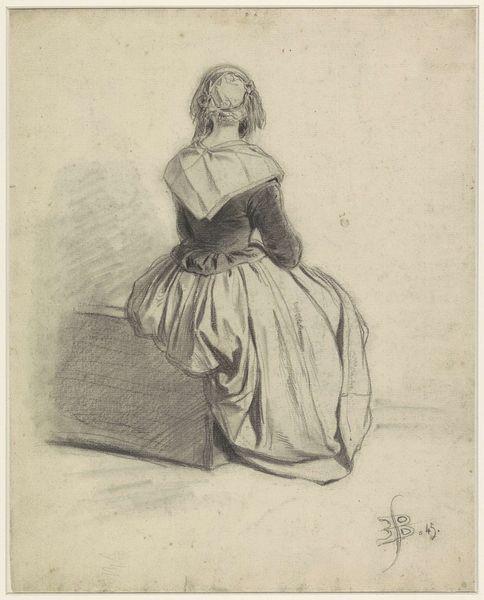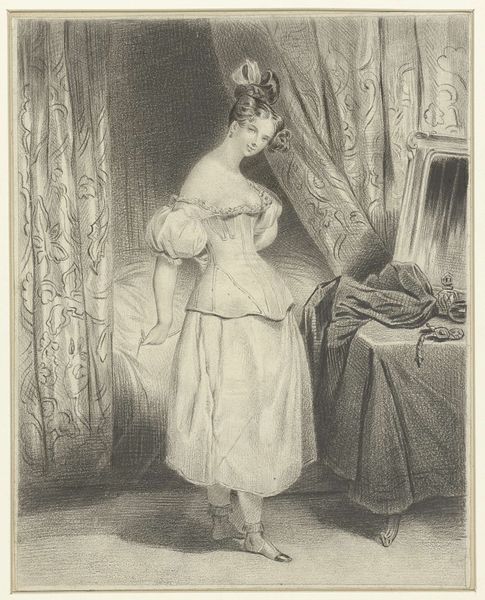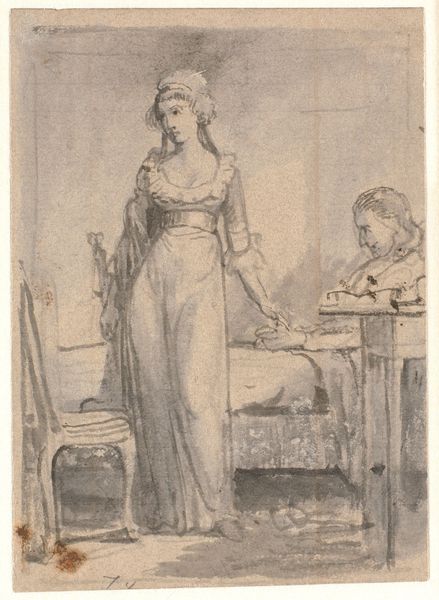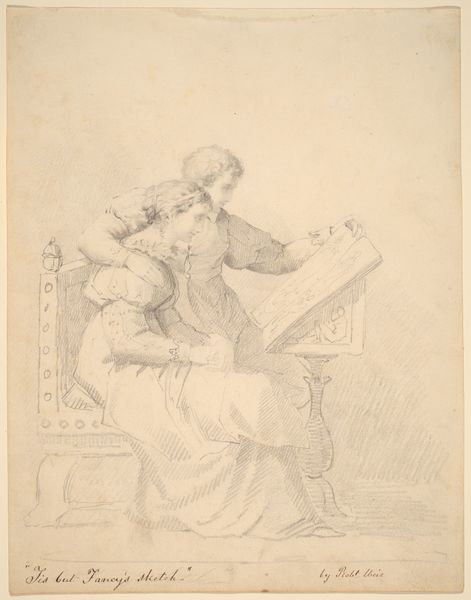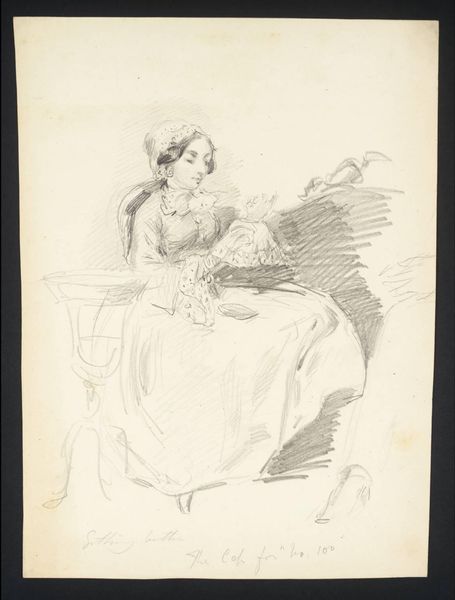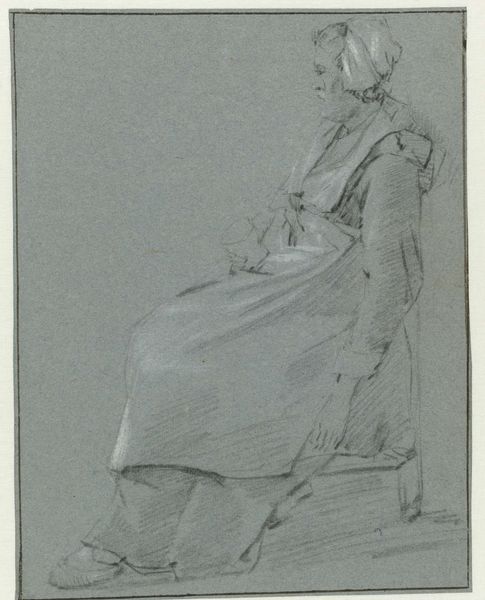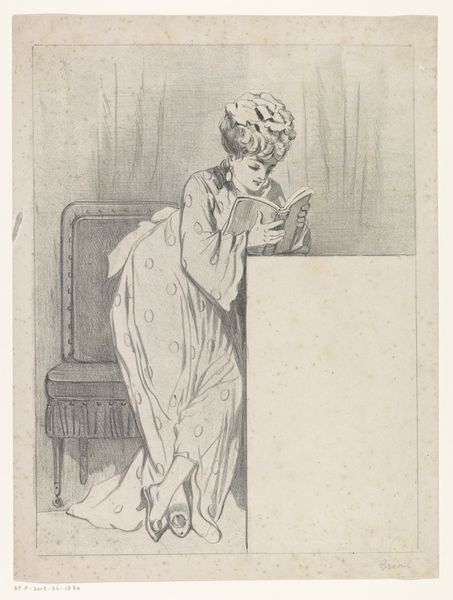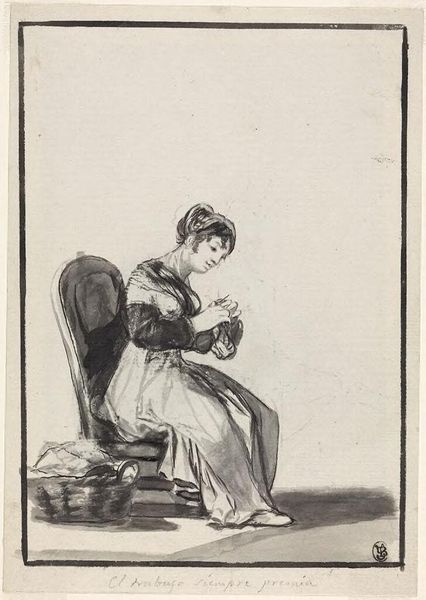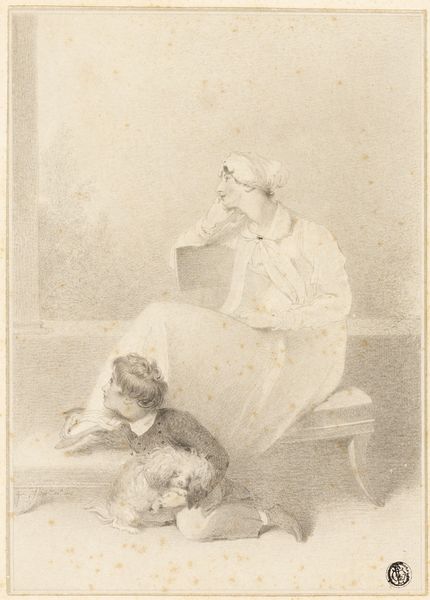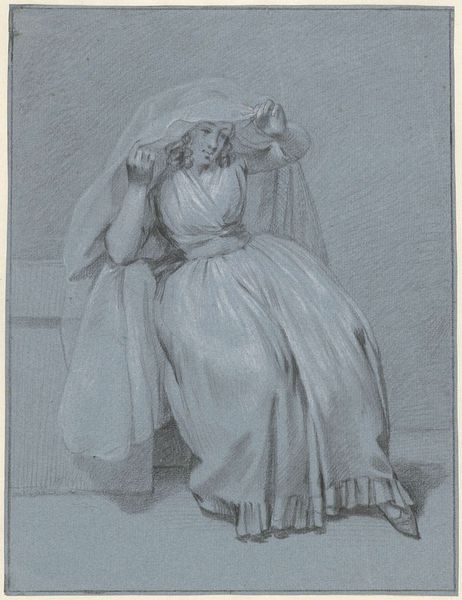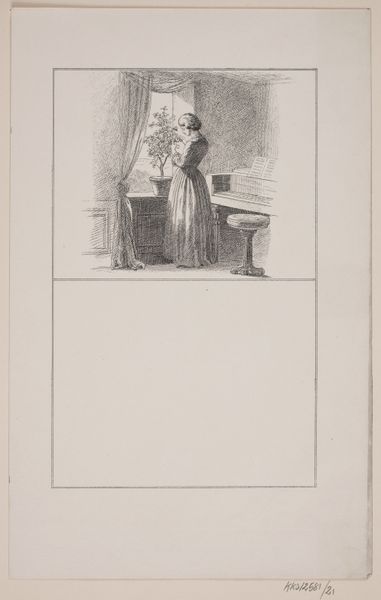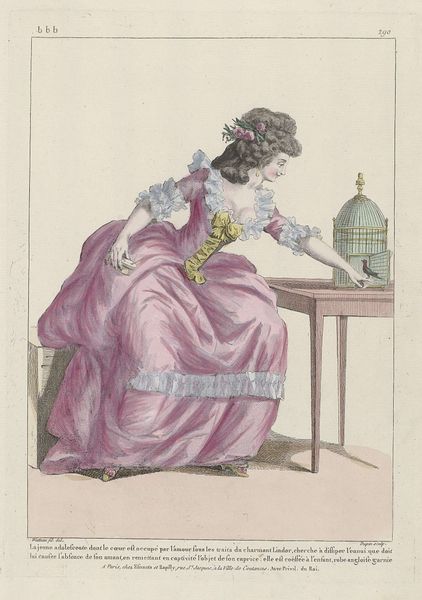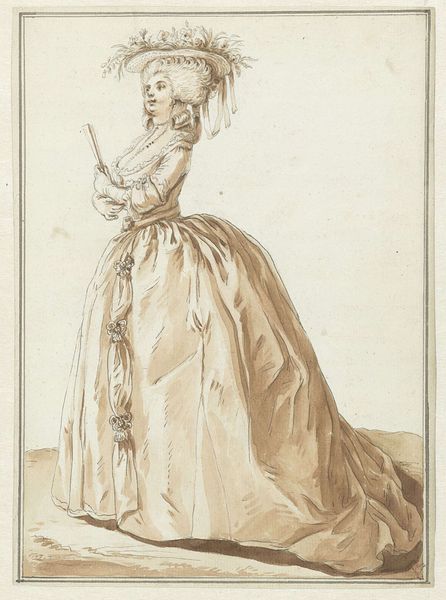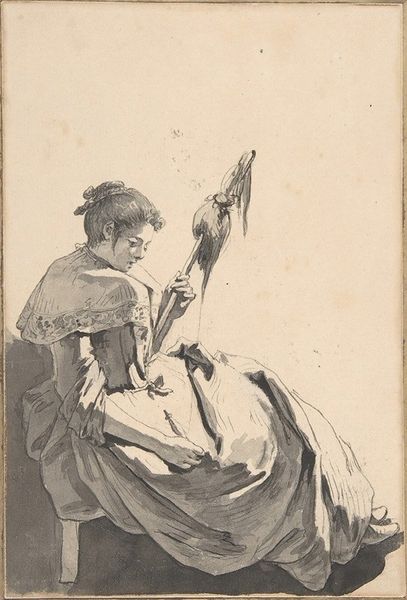
drawing, paper, pencil
#
portrait
#
drawing
#
neoclacissism
#
charcoal drawing
#
figuration
#
paper
#
pencil drawing
#
pencil
#
line
#
portrait drawing
#
genre-painting
#
academic-art
Dimensions: height 400 mm, width 362 mm
Copyright: Rijks Museum: Open Domain
Editor: We're looking at "De tekenles," or "The Drawing Lesson," created sometime in the 1700s by W.M. Obreen. It's a pencil and charcoal drawing on paper, showing a young woman taking an art lesson. It feels so intimate and domestic. What strikes you most about it? Curator: I'm immediately drawn to the ways this image intersects with evolving social values and the public role of art instruction in the late 18th century. Consider how Neoclassicism, an art movement rooted in the revival of classical antiquity, promoted ideals like reason and order, reflected in the subject matter of learning. Editor: I see that with the bust on the table – very classical! How does this tie to "the drawing lesson" itself? Curator: Exactly. This scene signifies more than just artistic skill. Think of how aristocratic identity during that period hinged upon accomplishments, or social rituals, such as mastering drawing. The “lesson” thus becomes symbolic, reflecting aspirations of cultural refinement. Editor: That makes sense. So the act of drawing is almost a status symbol? Curator: Precisely! Also, notice how this image showcases gender roles within that historical framework. Does the scene suggest empowerment for women through education, or rather a reinforcement of domesticity as the woman’s proper sphere? It is meant to cultivate virtues for the purpose of being an ornament. Editor: It's complex. Is she empowered or confined? Perhaps a bit of both. Thanks! I will never see academic drawings the same. Curator: Yes! By exploring such artwork, we gain insights into complex power dynamics, shedding light on ways education has acted both to liberate and to control throughout history.
Comments
No comments
Be the first to comment and join the conversation on the ultimate creative platform.
